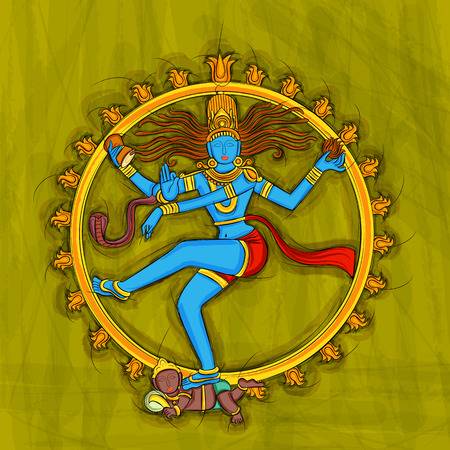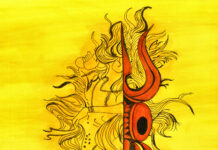
CHARACTE-GORIES involved:
THE ART HUNTRESS (TAH) & THE STORYTELLER (TS)
Kaali stands at the threshold of a metamorphosis. The time she has given to her art, the time she will give to her art, the age she is at and the years ahead summon an understanding and an acceptance of change.
The journey from bud to bloom is a lesson:
It is in everything’s destiny to change.
Art, however, demands growth, change, transformation sooner than most can manage. It is the world of the brave. It is the world of the willing. No matter when; no matter what. It involves making scary choices because apparently, they are the only ones that will ever make you grow.
Spontaneity is how we keep up with change.
With lives as erratic as theirs, artists possess an innate ability to adapt. When Kaali chose to be one, she chose to be challenged by the prospect and necessity of change.
She can change where she’s at, geographically. Changing who she is, artistically, for the better, is the challenge. And while we may think it takes effort, most often it’s an involuntary, unexpected process. There lies the challenge – when it befalls her and she’s unprepared; when in the whirlwind, she must retain the parts of her that are human, intuitive, perceptive.
Our Granny’s helping her make sense of this occupational hazard. Mysticism might have the answers she’s looking for. The question is, can change always be inspiring? Is it always worth embracing? Can you even tell?
When she’s made it from the shelter of her studio in Mahabalipuram to the canopy of a banyan tree in Chalakudy, they chat about change, just a girl and a granny.
And there in the midst of that exchange, Kaali is as comfortable as she hopes change will be.
TS: To me, Shiva is the ultimate metaphor for change.
TAH: Because he moves like he does?
TS: Certainly, that could be one reason why. Dance involves switching seamlessly from one movement into the next. And he is the ultimate manifestation of movement.
But also because he creates and he destroys, continuing the life cycle of evolution and dissolution. He is that pure consciousness that plays with matter to maintain the game of life and death in this world. He symbolizes the spirit behind all activity. He is knowledge that leads to action, and which subsequently leads to change. There can be no change without action. And there can be no action without knowledge.
TAH: So, who is Shiva then? I thought he was the Lord of Destruction, who removed all the evil; all the negative elements from our lives. From the little I’ve learnt, dancing choreographed sequences portraying the glory of Shiva, I thought he was the Master of self-immolation.
TS: Yes, Shiva destroys. But only to facilitate the process of creation. For there can be no creation without destruction.
TAH: What do you mean Granny? Why does anything have to be destroyed to be created?
TS: Well, let’s look at everything around us. Nature, for instance. The flower has to wither away to make way for its fruit. The night has to depart for the day to arrive. Trees have to be brought down for a village to come up. Village huts have to vanish to make way for urban buildings. Finally, the urban buildings will also have to all give way to sky scrapers. There can be no construction without deconstruction.
TAH: Hmm…that’s true of us humans too, perhaps. May be we can’t be better unless we destroy the parts of us that are deterring us from being so.
TS: Of course Kaali, creation and destruction are as much counterparts of our being as Shiva’s. He resides in us after all – the ultimate spirit pervading us. He facilitates change. He is the lord of change. And it comes, whether or not you’re poised for it. As an artiste, it is your privilege. Change is your power.
TAH: Hmm…I am thrown off by the constancy of it sometimes. It’s hard to keep up with being pushed out of your comfort zone every day.
TS: Oh, change is not comfortable Kaali, but it is necessary, for the world to keep moving. Otherwise we’d all be stuck. As a dancer, Shiva is your fundamental lesson in destruction for the sake of creation. In getting rid of your old self for a polished, near perfected one.
TAH: I think I too am mesmerized by the concept of Shiva. Because he is the cosmic dancer. The immensity of those two words was explained to me very early on in my life as a dancer – that his dance symbolizes the dance of matter in this universe; that his perpetual movement reminds us of the rhythm of life. May be all unending activity in this world is but a manifestation of Lord Shiva. His dance: a sum total of all the changes that take place in this world.
TS: Tell me Kaali, did his form ever pique your curiosity? It must have. There is, after all, a deep significance behind his image.
TAH: Given how often we strike Lord Nataraja’s principle pose, we have its symbolism floating in our blood stream. But I want to hear it from you!
TS: Hear it then! Shiva, the Lord of Dance, your beloved Lord of Dance, in visual art; in performance art, is described as an image having four arms. With his left leg raised across his frame, his right leg is firmly atop a demon while his raised left leg is pointing towards the cosmos, indicating that one has to overcome ignorance to achieve liberation. His right hand is in a constant protective gesture, for all he wishes to preserve – humility, perhaps, while his left hand too points towards the infinity. The other right hand holds the miniature drum describing Shiva’s function as the creator. Damaru, the primeval drum symbolizes the primeval sound from which came language, music, evolution. His left hand holds a tongue of flame, describing his function as the destroyer. Shiva maintains this crucial balance of creation and destruction. Of evolution and change.
TAH: No wonder Granny, no wonder then that we, in dance, revel; we almost exult in describing Shiva because he lends to so much imagery with his creative aspect and his destructive aspect. Of knowing when to hold on and let go.
TS: But have you ever noticed that amidst all this frenetic activity, Shiva’s face is calm and peaceful? Change does not disturb him. Even though he facilitates the change, very often driving it, his steadiness and composure indicate that we need to be calm, amidst the winds of change. Shiva then, is a force that is static as well as dynamic.
TAH: I’ve often felt it Granny, that Shiva is that force, that inspiration, which makes me dance.
TS: He makes us act, which makes us change. And that is why he is the lord of change. He is the lord of dance. Isn’t dance the single most dynamic phenomenon to exist? From one step to the next. Movement: the biggest metaphor of change.
TAH: And yet, so much about stillness and pauses and holding and staying calm and controlled and poised. A certain peace emerges from all the activity!
TS: Well, only a lucky few find it! You have made a choice Kaali. Only a brave few can make it. To live the life of an artiste. To make your life art. Let Shiva inspire you to make a difference. In your art. Through your art.
TAH: As classical dancers, we are supposed to be the repository of the arts. It feels like a lot of responsibility. Changing, getting better, refining ourselves. And then, preserving our Art.
TS: Surely, that is one kind of change. To improve, to strive to be better. To always strive to be a better version of yourself. And then once you’ve got there, to innovate with the art form – your single biggest blessing. Like Shiva, it is imperative that we continue the process of evolution. To remain inspired, you will need to re-invent. You will need to bring about a transition in our tradition. You will need to make a difference.
TAH: And we can only do so if we change.
TS: Bear in mind Kaali, you do not do away with or disrespect the tradition, you simply make it your own and play with it, keeping to the rules, but strategizing differently each time! Tradition does not restrict. It encourages change. It empowers. It inspires.
When you have learnt how to play the game, listen to your creative instincts. They come from Shiva. The one inside your soul. And they will help you evolve and carry your art with you.
Change is inevitable. We have learnt that from evolution. Like Shiva, we must make our peace with it. And then, we will find joy!
I’ll give you something from the Upanishads:
O’ Supreme Verse.
Lead me to change myself from untruth to truth.
From Darkness to Light.
From inactivity to activity.
Lead me to change towards peace, peace and peace.
And that might be the biggest change that we all need right now. What a boon it is for you to be able to effect it through your Art.
DISCLAIMER: The content on this website is merely an opinion and not intended to malign any religion, ethnic group, organisation, company or individual. Nothing contained herein shall to any extent substitute for the independent investigations and sound judgment of the reader. While we have made every attempt to ensure the accuracy and completeness of the content contained herein, no warranty or guarantee, express or implied, is given with respect to the same. The SHOUT! Network is neither liable nor responsible to any person or entity for any errors or omissions, or for any offense caused from such content.
In addition to the above, thoughts and opinions change from time to time… we consider this a necessary consequence of having an open mind. This website is intended to provide a semi-permanent point in time snapshot and manifestation of the various topics running around our brains, and as such any thoughts and opinions expressed within out-of-date posts may not be the same, or even similar, to those we may hold today.
Feel free to challenge us, disagree with us, or tell us we’re completely nuts in the comments section of each piece. The SHOUT! Network reserves the right to delete any comment for any reason whatsoever (abusive, profane, rude, or anonymous comments) – but do SHOUT! with us, if you will.














